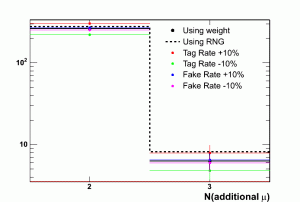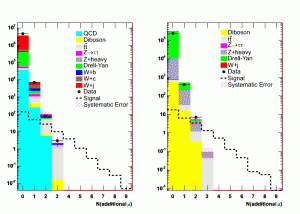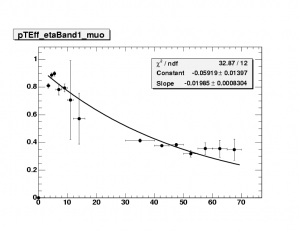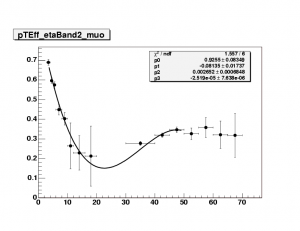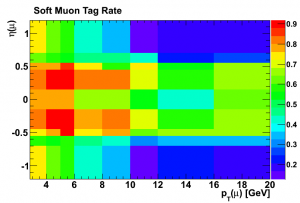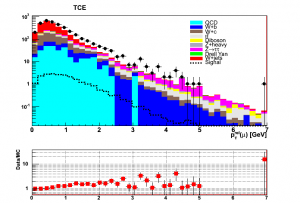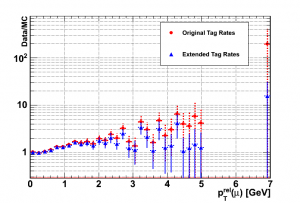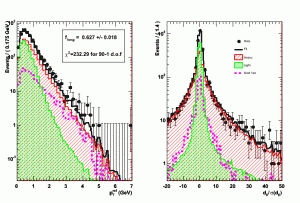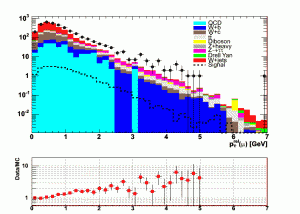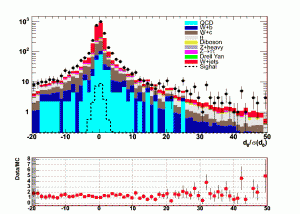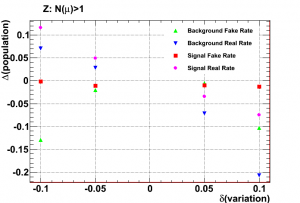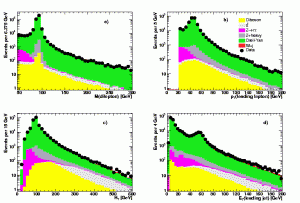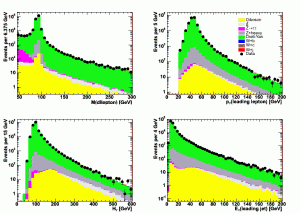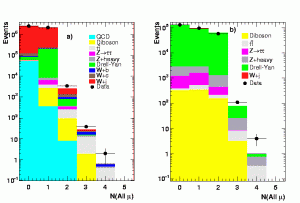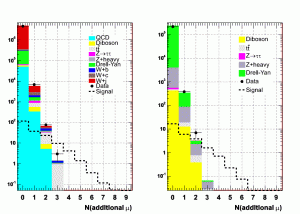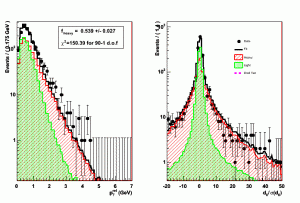Using the exact weightings for the muon multiplicity distributions as described below, I made a plot of the change in the number of background events with respect to variations in the tag and fake rates.
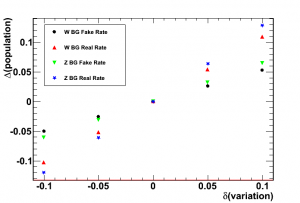 Variations in the muon tag rate have more of a systematic effect on the background estimate than corresponding variations in the pion/kaon/proton mistag rates. In addition, the change in the number of background events is linear with respect to tag rate variations in all cases.
Variations in the muon tag rate have more of a systematic effect on the background estimate than corresponding variations in the pion/kaon/proton mistag rates. In addition, the change in the number of background events is linear with respect to tag rate variations in all cases.
Next I take the 10% variations of both the real and fake rates and run a Bayesian limit calculator using 1000 pseudoexperiments drawn from the null hypothesis. We ask for 95% credibility level. The program returns the scale factor on the signal model that is excluded at this level. The output is as follows:
Observed : 0.305
Expected : mean=0.284 +1sig=0.396 -1sig=0.222 +2sig=0.589 -2sig=0.185
The observed exclusion is slightly stronger than expected, but completely within the 1 sigma bands. The signal model is excluded at 95% credibility at a cross-section of 30% of that provided.
